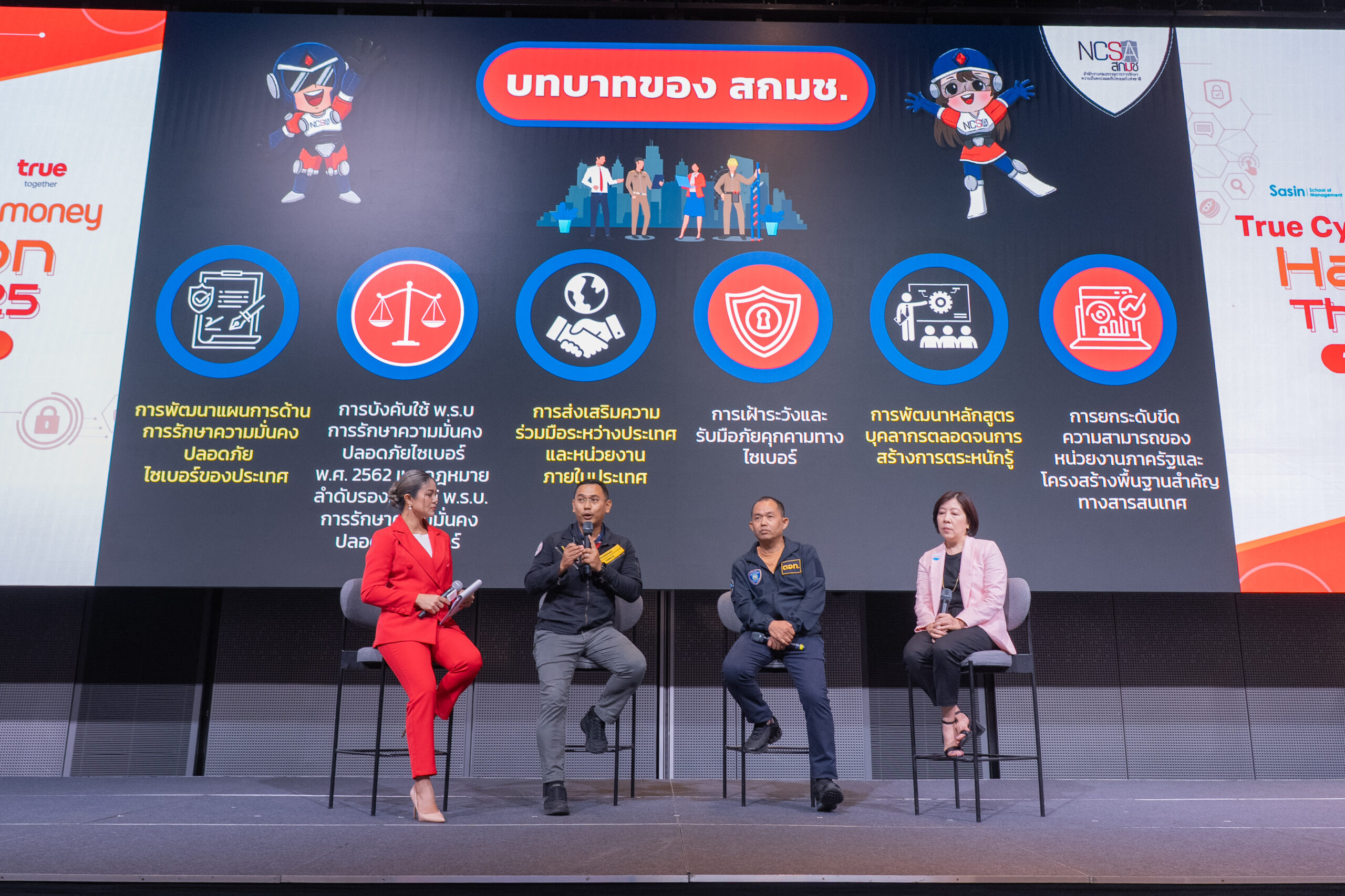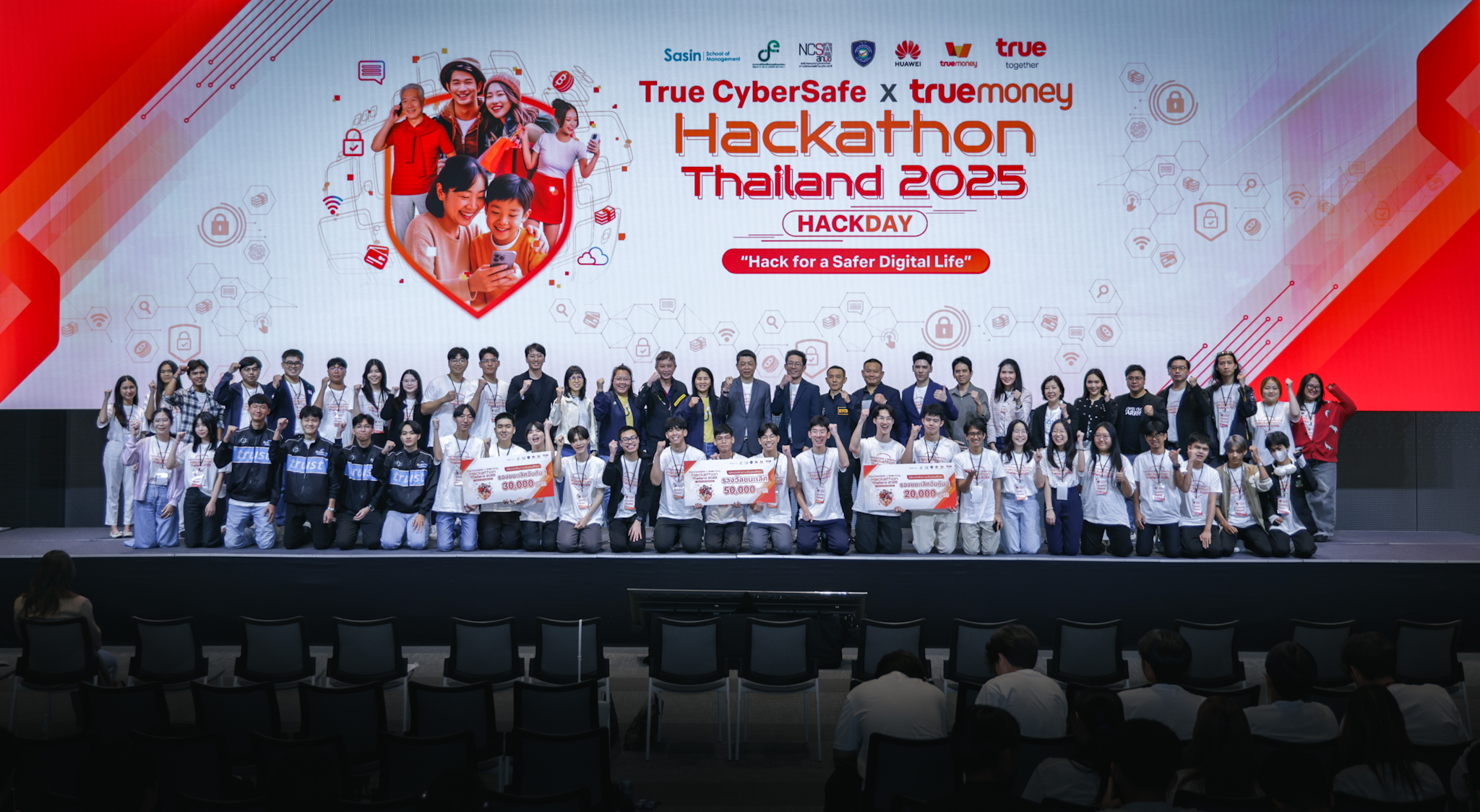As technology rapidly advances, the complexity of cybercrime continues to evolve. This has driven global growth in the Crime Tech market, technologies that help prevent, detect, or respond to criminal activities. In Thailand, despite the high demand, there are currently fewer than 10 startups focused on this domain.
However, according to Gartner, a leading global IT research and advisory firm, it is forecasted that end-user spending on information security in Thailand is projected to total 18.4 billion baht in 2025, a 12.3% increase from the previous year. This presents a major opportunity for Thai developers and startups to turn this pressing challenge into real innovation. The True CyberSafe x TrueMoney Hackathon Thailand 2025 provides an open space for all ideas to grow, whether you’re a student, a startup, or a member of the public. It’s a chance to come together and “hack” for a safer future, and to create tangible, real-world Crime Tech solutions.
Here are key insights and recommendations from three expert speakers at the project’s launch event, perspectives that may serve as the starting point for impactful innovation.
Strong Cybersecurity Requires Policy, Technology, and People
“Cybersecurity isn’t just the responsibility of governments or organizations. It’s an ecosystem that involves everyone,” said Major Pawich Burapachonlatid, Director of National Cybersecurity Academy Office, National Cyber Security Agency, highlighting the broader picture of cybersecurity governance. Under Thailand’s Cybersecurity Act of 2019, the NCSA has become a central driving force in overseeing and enhancing the country’s cyber readiness.

As a result of its continuous efforts, Thailand now ranks 7th globally in the Global Cybersecurity Index (GCI) by the International Telecommunication Union (ITU). However, cyber threats are evolving just as rapidly, particularly with the rise of deepfake AI, which can convincingly generate fake images, voices, and videos. These can cause harm on both personal and national security levels.
Major Pawich emphasized that the direction of innovation must now flip the perspective. Instead of merely building technologies, we must focus on developing innovations that can detect and counteract increasingly sophisticated forgeries.
Cyber Threats That Begin With Our Own Beliefs
“In real-life scenarios, criminals don’t attack technology. They target our minds,” said Pol.Col.Kreangkrai Puttaisong, Superintendent, Cyber Support Unit, Cyber Crime Investigation Bureau. He described how cyber threats often come disguised through psychological manipulation. Victims are frequently deceived due to confirmation bias, the tendency to seek information that supports their own beliefs and social proof, or misplaced trust in seemingly credible sources. Criminals exploit these biases by isolating victims during decision-making moments, preventing them from communicating with others because outsiders could quickly recognize the scam.

“This is why we pose the question: Is it possible to create a technology that can alert victims during the moment of decision-making, not just after the damage is done?” Kreangkrai asked. He also emphasized the need to build technologies that can identify high-risk individuals with precision, which requires deep insight into people’s daily lives to seamlessly integrate innovation into their routines.
“We simply cannot design meaningful innovations if we don’t understand how a motorcycle taxi driver checks his phone, how an online vendor processes shipments, or how the elderly use mobile phones,” he concluded.
Understanding Humans Before Designing Technology
“Good cybersecurity isn’t just about intelligence. It’s about understanding people,” said Assistant Professor Dr. Pattarawan Prasarnphanich, Lead Researcher, Behavioral Research and Informatics in Social Science Research Unit, Sasin School of Management, Chulalongkorn University. She emphasized that the core of designing effective cybersecurity solutions lies in empathy, because people often fall victim when they make emotionally driven decisions rather than rational ones. Different groups have different vulnerabilities. Elderly individuals may panic and click on messages warning their account will be locked, while children and teenagers might share passwords or personal information to gain social approval online.

One way to design systems that gently nudge users to think before they click is by applying Digital Nudging, particularly through how messages are framed. For example, instead of saying “Are you sure you want to download this software?” a more effective message would be: “If you download this, your device could be infected with malware.” This helps users recognize the potential risks and pause before taking action.
Even small changes in wording can have a powerful effect. Techniques that work well include: Using large numbers to convey urgency, addressing the user directly rather than in general terms to create personal relevance, and emphasizing potential losses over gains because people are typically more responsive to what they might lose rather than what they might gain.
In the end, a truly effective solution isn’t just smart. It’s one that empowers ordinary people to protect themselves, even on days when they don’t realize they’re at risk.
All of these are perspectives from three speakers that reflect a key insight. Tackling today’s cyber threats is no longer just about cutting-edge technology. It’s about understanding people, their behaviors, and the everyday vulnerabilities in their lives.
_____
The “True CyberSafe x TrueMoney Hackathon Thailand 2025”, taking place from 14 June to 29 November 2025, invites innovators, startups, students, and the general public across Thailand to submit creative ideas in teams of 4 – 5 people to tackle cyber threats and help build a safer digital world. Solutions should address one of three key challenge areas: Safe Internet Use, Safe Financial Transactions, or Safe Digital Living, with a focus on three target groups: Youth, seniors, and foreign tourists or workers in Thailand. The competition is divided into two categories: the general public/startups (no age limit) and university students (from any year or institution, including mixed teams). The top 30 teams will advance to the hackathon and join the True Lab Incubation Program, while the top 6 teams in the startup/general track will receive innovation funding to further develop their ideas into practical solutions. Applications are open now until 11 July 2025. For more information, visit https://linktr.ee/true_lab or follow True Lab on Facebook.







